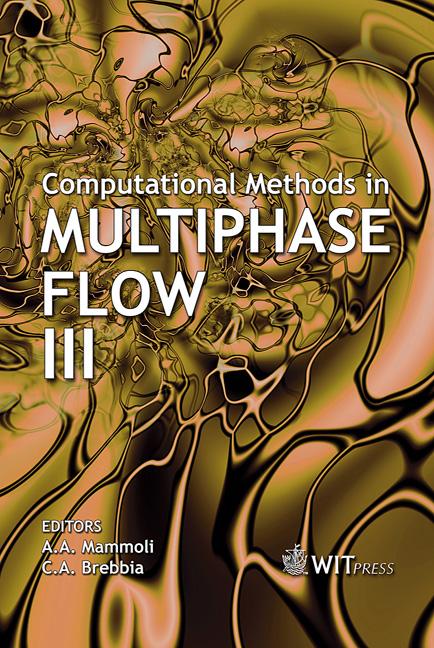Application Of The Two-phase Filtered Density Function Approach For LES Of A 2D Droplet Laden Turbulent Mixing Layer
Price
Free (open access)
Transaction
Volume
50
Pages
9
Published
2005
Size
438 kb
Paper DOI
10.2495/MPF050261
Copyright
WIT Press
Author(s)
M. D. Carrara & P. E. DesJardin
Abstract
In this study, the two-phase velocity-scalar filtered density function transport equation for large eddy simulation is considered in the limit of a continuum-dispersed phase two-phase flow. For a sufficiently small dispersed particulate phase, all quantities conditionally filtered within the dispersed phase may be disregarded leaving only terms conditionally filtered on the phase interface. These conditionally surface-filtered terms account for phase-coupling between the dispersed and continuum phases of the flow. Closure models are presented and implemented for a two-phase system consisting of a water droplet laden 2d temporally developing mixing layer. Marginal FDF transport equations are presented for each phase and a statistically equivalent set of Ito stochastic differential equations (SDE) are derived from each marginal FDF equation. Simulations are conducted via a full stand-alone Lagrangian particle Monte-Carlo method with closure models to account for subgrid scale (SGS) mixing and inter-phase conversion processes. The effect of variable Stokes number on turbulent dispersion of evaporating and non-evaporating droplets is discussed. 1 Marginal FDF transport equations Two-phase velocity-scalar filtered density function (TVSFDF) methods have recently been developed for large eddy simulation (LES) of separated two-phase flows [1]. In this approach, unclosed terms arise in the marginal FDF transport equations in three classes: quantities conditionally filtered within the phase, quantities conditionally filtered on the phase interface, and inter-phase conversion terms
Keywords





